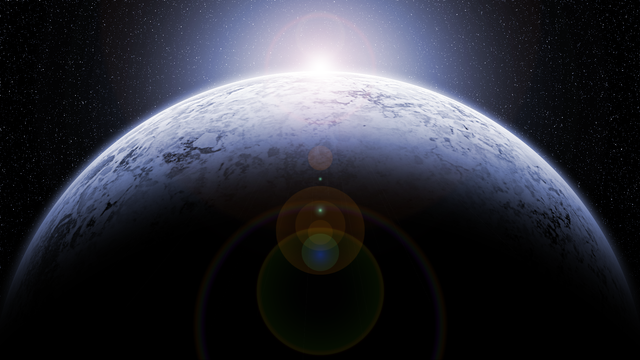Astronomers may have discovered a second planet at the Proxima Centauri system – the nearest solar system. It seems to be orbiting at a distance of 1.5 AU but needs to be confirmed.

Image by Дмитрий Бакунович from Pixabay
- Be also sure to check out my other posts and follow me @kralizec and subscribe to my Youtube channel at Kralizec Gaming Youtube Channel
At the moment, scientists are tiptoeing around the planet as they aren't completely sure that it exists. But authors of a recent study looked into all other explanations and the existence of a planet is the most likely solution.
Proxima Centauri c should have a mass of 5.8 ± 1.9 Earths and orbits its star in 5.2 years in a distance of1.5 AU – roughly where Mars orbits the Sun. In our solar system, the planet would likely be on the outer edge of the Goldilocks zone (habitable zone). But since Proxima Centauri is a cold red dwarf the temperatures will be very low on the surface of Proxima Centauri c. So why is this discovery such a big deal? Because in a close future we might be able to directly observe the planet.
Measuring Radial Velocity
This is a method that was used to discover the planet. Proxima Centauri c orbits around a center of gravity that is shifted against the center of the star. It seems like if the planet is sort of pulling on the star and this movement is visible as a spectral shift in the star's light. This method can give us some information about the orbit and the minimal mass. But the exact mass depends on the tilt of the orbit and we do not know the tilt against us.
Lost In Dust
The radiotelescope network ALMA discovered a signal on the 1.3 mm wavelength at a distance of roughly 1.2 seconds from the star. This is roughly equivalent to 1.6 AU and it could be Proxima Centauri c – possibly the dust in the planets rings.
It might but it doesn't have to be. The signal might be coming from various sources including a galaxy far away. We will need more observations to make sure the source of the signal is moving around the star.
The same devices also discovered a belt of cold dust at a distance of 30 AU from the star. Its tilt is 45 degrees. If Proxima Centauri c orbits in the same plane we would get the tilt to calculate the true mass and if this was the case the mass would be 8.2 Earth masses.
Direct Observation
Roughly 98 % of all exoplanets we know of were discovered by indirect methods. There is just a handful of planets that we can directly see and they are young and thus hot planets that still shiny in the infrared spectrum. But in the future, we will be able to see even normal – cold – planets.
Obviously, we will need powerful telescopes. But there are two other things the planets need to fulfill. First, they must orbit one of the nearby stars. Secondly, they orbit far from the star from our point of view as we must shield ourselves from the light of the star and thus we will shield even the planets that orbit close to it.
Sources:
- If you like the content I’m producing about science maybe you will like the content I produce about gaming as well! Be sure to check out my other posts!